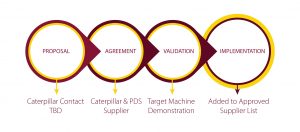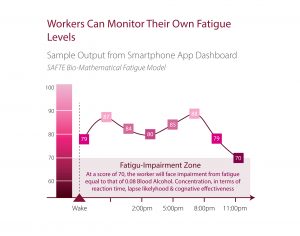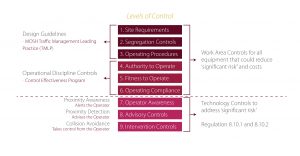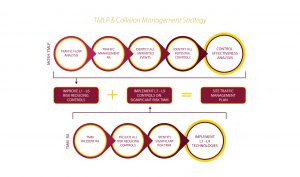
Proximity Detection Systems Readiness
With 2020 being the last year of implementation of PDS Level 9 for open cast mines, it has become very prominent for open cast mines to prepare and get themselves ready for the said due date.
Regulation 8.10
….” where there is a significant risk” of such collisions……
- All operations should already have completed a risk assessment to determine “significant risk” processes and equipment
….”where there is a significant risk” of such collisions trackless mobile equipment must be provided with means to automatically detect the presence of pedestrians / equipment to effectively warn the operator and the pedestrian of such a presence.
- ‘Proximity Awareness -should already be implemented (2015)
….”where there is a significant risk” of such collisions and no action is taken to prevent a potential collision, further means shall be provided to retard the machine to a safe speed, where after the brakes of the machine are automatically applied.
- ‘Collision Avoidance –period of grace:
1.Electrical/Battery Powered Equipment–no period of grace
2.New Diesel Equipment to be Collision Avoidance Ready –July 2019
3.Underground Diesel–end 2020 Reg. 8.10.1.2 (b)
4.Opencast and Open Pits–end 2020 Reg. 8.10.2.1 (b)
5.Surface–end 2020
In light of the above, SACEA in collaboration with Barloworld held a meeting on the 26th of June for open cast users to discuss and share industry developments with regards to PDS Level 9 technology. The meeting was attended by 40 candidates from open cast mines, PDS suppliers and the inspectorate.
JP Briggs from Barloworld gave a progress update on CAT PDS interface developments and also introduced the all new CAT fatigue monitoring smartband. JP outlined the route Caterpillar has taken in order to work with different PDS suppliers and the process suppliers must follow in ensuring their systems are compatible with CAT machines.
So far one PDS supplier has been through the process and currently at the last stage awaiting final approval. Few of the suppliers are still within the initial stages of the process.
Purpose for Caterpillar to Work with PDS Suppliers
- Pull should come from customers
- PDS suppliers should already be established at target mine site
- PDS suppliers should comply to ISO21815-2 (Sept 2017)
- Limited to sites impacted by South African DMR Regulations
Software Enabled Attachments (SEA) can be enabled by limited parties

“A pull must come from customers (Mining Houses)”, JP reiterated….it is in the hands of customers to encourage PDS suppliers to go through validation process.
In his presentation on fatigue monitoring system, JP introduced a CAT smartband system that allows any person to monitor own fatigue levels, the system is able to give a predictive measure of futuristic fatigue levels. Fatigue has contributed significantly to TMM accidents/incidents in the industry. The system allows supervisors to assess and know fitness level of own team at the beginning of each shift.
Fatigue Management with CAT Smartband.

Thys Greyvensteyn from the Minerals Council gave update on industry PDS developments. In his presentation Thys emphasized the importance of ensuring the effectiveness of Level 1-6 requirements of the legislation. “The success for Level 9 implementation relies solely on the effectiveness of Level 1-6 controls,” Thys emphasized.
He went into detail on the critical aspects of Level 1-6 controls in order to reduce the risk significantly and ultimately reducing the necessity of Level 9 implementation.

Thys urged and encouraged mines to utilize the services of MOSH to assist with Traffic Management Leading Practice and to develop Collision Management Strategy.

In his presentation Thys placed emphasis on the importance of collaboration with all other stakeholders highlighting the fact that PDS is not just about technology implementation but more a culture change, therefore the responsibility should not only rest with engineering function but rather with all stakeholders (OEMs, PDS suppliers, Engineers, Mining personnel, Training personnel, Unions etc).
The question that must be asked is “are people ready?” Change management is very key to the success of Level 9 implementation.
Some key questions to answer in preparation for 2020 Operational Readiness:
-
-
- Is there a CMS Strategy?
- Has “Significant Risk” been defined?
- Is there an implementation Plan?
- Is there an operational traffic management plan?
- Haas PDS Supplier been identified?
- Is there a current PDS Supplier, can they perform at avoidance?
- Have the OEMs been engaged and are they committed?
- Is there a robust implementation charter?
- Has senior management signed-off on strategy and are they supportive?
- Has adequate budget been provided?
- Is there a strategy for support?
- Is there a change management plan?
- Are Operations actively involved
- Are safety and procurement departments on board?
- Who is accountable for implementation?
- Dedicated Project Manager?
-
Thys went on to share the roadmap for collision avoidance, PDS supplier maturity level and the challenges thereof which ranges from costs, big mines vs small mines solutions, the complexities of different intelligent solutions for different mining areas and the UP lab scale tests.
In his conclusion Thys emphasized the importance of Collision Management Strategy and the inclusion of all stakeholders.
The inspector of Machinery (Thando Matanga) requested and urged the engineers to ensure mining colleagues take part in this process of implementation and change management. She further requested for the 2 presentations to be shared in the next open cast regional tripartite forum (RTF).
Ms Matanga concluded by congratulating SACEA in its effort and active participation in the journey to curb accidents/incidents in the industry she also expressed her disappointment in the attendance and more so encouraged engineers to involve mining colleagues in such topics.
Bontle Mtshengu
SACEA Council Member



